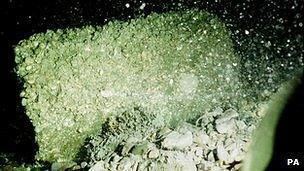 | ||
Hurd's Deep (or Hurd Deep) is a deep underwater valley in the English Channel, northwest of the Channel Islands, at position 49 degrees 30 minutes North, 3 degrees 34 minutes West. From marine navigational charts, the maximum depth is 180 m (590 ft), and lies to the north of the isle of Alderney. It is most probable that it was named after Captain Thomas Hurd RN, by Admiral Martin White (born at Hayling Island, 1779).
Contents
Hurd's Deep is the final resting place of HMS Affray which sank in 1951.
DumpingEdit
Following the First World War, Hurd's Deep was used by the British Government as a dumping ground for both chemical and conventional munitions. SMS Baden was scuttled there in 1921. Following the Second World War, it was used to dump military equipment, munitions and weaponry left behind by the ousted German invaders of the Channel Islands. Routine dumping of British munitions carried on until 1974.
Between 1946 and 1973 the area was also used for the dumping of low and intermediate level radioactive wastes.
Late Quaternary OriginEdit
The underwater valley system found on the floor of the eastern English Channel formed from catastrophic flood which was caused by a breaching of a rock dam at the Dover Strait which released a massive pro-glacial lake in the southern North Sea basin. This massive flood scoured the former river systems to form the Hurd Deep in late Quaternary times.
A Pleistocene glacial refugiumEdit
During the ice ages when the sea level dropped most of the English Channel was dry land. Hurd's Deep likely remained as a sea. During the Pleistocene it likely was a glacial refugium.
